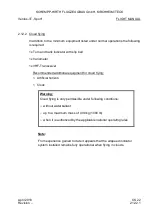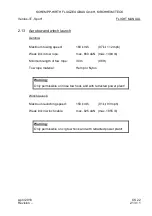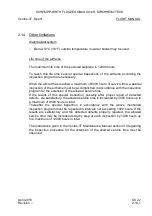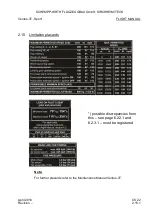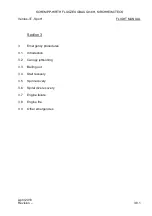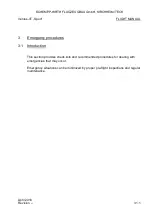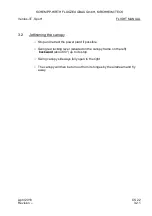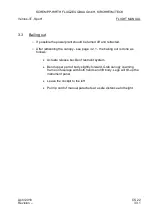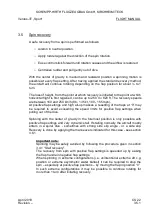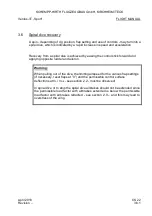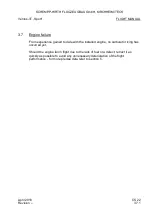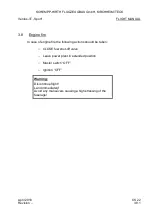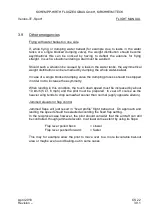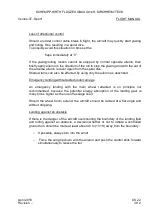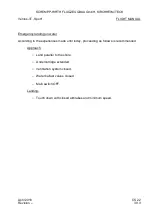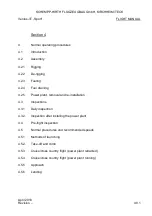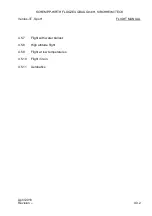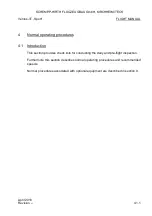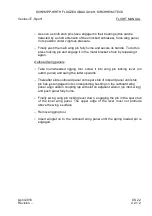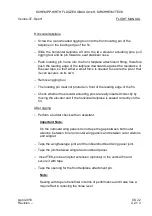
SCHEMPP-HIRTH FLUGZEUGBAU GmbH, KIRCHHEIM/TECK
Ventus-3T „Sport“
FLIGHT MANUAL
April 2018
CS 22
Revision –
3.9.2
Loss of directional control
Should a rudder control cable break in flight, the aircraft may quickly start yawing
and rolling, thus resulting in a spiral dive.
To possibly avoid this situation on time set the
flaps immediately at “0”.
If the yawing/rolling motion cannot be stopped by normal opposite aileron, then
briefly apply aileron in the direction of the roll to stop the yawing and with the aid of
the adverse aileron recover again from the spiral dive.
Shallow turns can also be effected by using only the aileron as described.
Emergency landing with retracted undercarriage
An emergency landing with the main wheel retracted is on principle not
recommended, because the potential energy absorption of the landing gear is
many times higher as the one of fuselage shell.
Should the wheel fail to extend, the aircraft should be landed at a flat angle and
without dropping.
Landing against an obstacle
If there is the danger of the aircraft overshooting the boundary of the landing field
and rolling against an obstacle, a decision whether or not to initiate a controlled
ground turn should be made at least about 40 m (131 ft) away from the boundary:
o
If possible, always turn into the wind!
o
Force the wing tip down with the aileron and push the control stick forward
simultaneously to relieve the tail.

